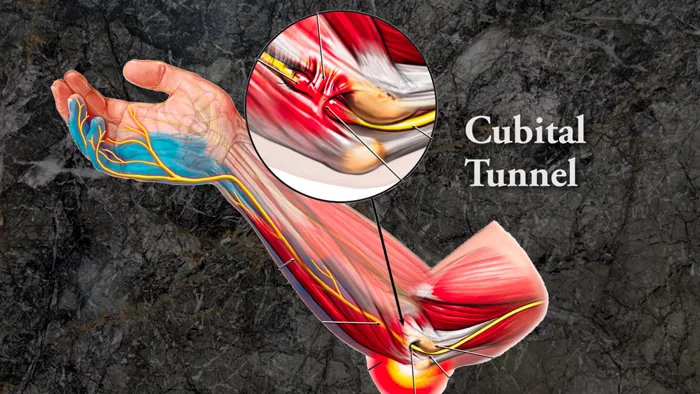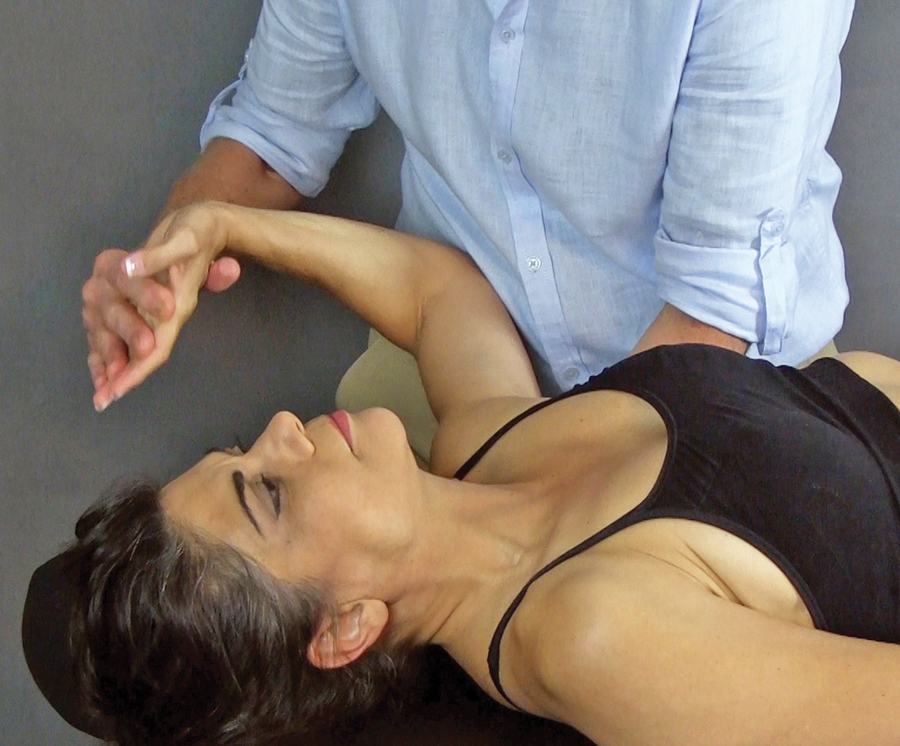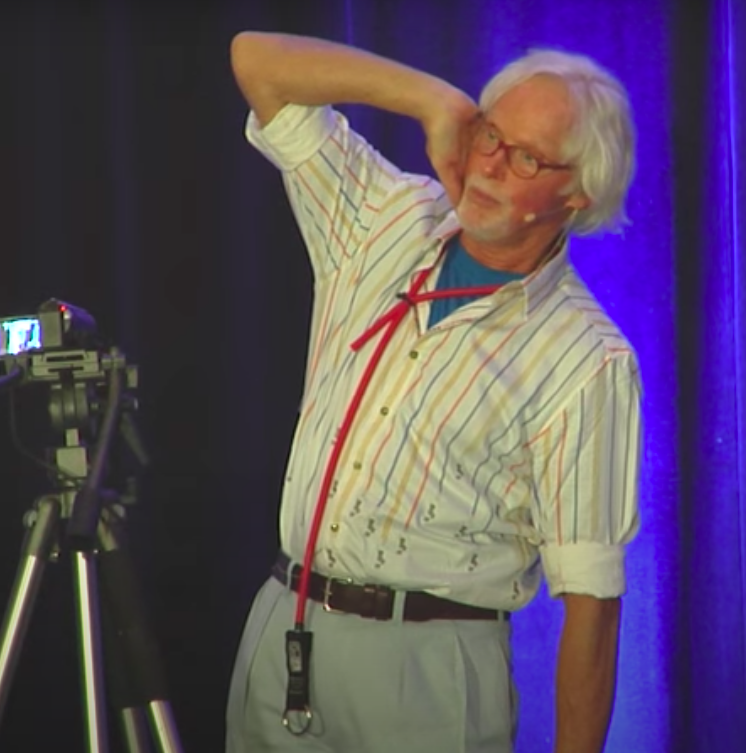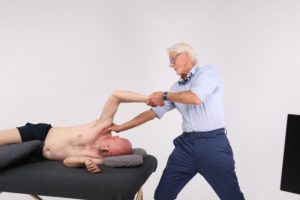Mobilizing the Ulnar Nerve
The ulnar is the most exposed of all nerves and ranks second only to the median nerve (carpal tunnel syndrome) as an arm and hand pain generator. Irritation of the ulnar nerve can present as tingling, pain and numbness in the pinky and ring fingers sometimes in a shocking way as the flexed elbow strikes an object compressing it against bone.
Like a telephone cable, the ulnar nerve passes through a protective tunnel behind the elbow’s medial epicondyle or funny bone forming what is called the ‘cubital tunnel’. When the ulnar nerve is compressed or entrapped, the nerve can tear and become inflamed leading to a variety of symptoms, called Cubital Tunnel Syndrome. (Image 1.)

I’ve discovered about eight ulnar nerve entrapment sites beginning in the neck, extending through the thoracic outlet, armpit, and down into the hand. All those entrapment sites are addressed in my “Treating Trapped Nerves” course, and some examples are presented below. You’ll love how easily these routines integrate into your existing massage and bodywork practice, and your clients will be amazed at how quickly they are free of nagging nerve pain emanating from the neck, thoracic outlet, cubital tunnel, and Gyon’s tunnel.
Ulnar Nerve Gliding Routine

- With therapist facing his client, his right hand grasps client’s right wrist, and horizontally abducts and externally rotates her arm to 90 degrees
- Therapist’s left hand snakes under and grasps /depresses the client’s shoulder to stabilize
- Client’s elbow is braced against therapist’s hip
- The fingers of therapist’s right hanradially deviate and extend client’s wrist and fingers (particularly the 5th digit)
- In this position, the client right rotates / sidebends her head to gently stretch the nerve
- Therapist then uses his hip and hands to slowly abduct and depress client’s shoulder a little further testing for increased nerve sensitivity
- To glide the ulnar nerve proximally, the client left sidebends her head as the therapist releases finger and wrist extension
- To glide nerve distally, the therapist increases elbow flexion, and arm and wrist pronation (goal is to place client’s fingers along the side of her face with fingers facing down)
- Slowly repeat 5 to 10 times to gently floss and release entrapped nerve at the thoracic outlet, cubital tunnel, or Guyon’s canal.
Repeat this maneuver 5 times and reassess for decreased ulnar nerve pain.
Nerve Gliding Home Training Exercise: Upside Down Goggles





*Work within your range of motion. With repetition, your range of motion may increase. Its common that bodyworkers can’t get into the upside down goggles because of tightness in flexors, weakness in extensors, and limited rotation in the shoulders.
On sale this week only!
Save 25% off the Posture Pain Performance course!

NEW! USB version with enhanced video
Discover the foundational principles behind MAT technique as we take you on an in-depth look at the connection between pain, posture and function. Save 25% off the Posture Pain Performance course this week only. Offer expires Monday April 22nd. Click the button below for more information and to purchase the course. Upon completion receive 20CE hours and a certificate of completion to display in your office.
Bonus: Order the Home Study version and receive the e-Course for FREE!





